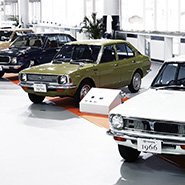Nov. 04, 2016
Corolla Trivia
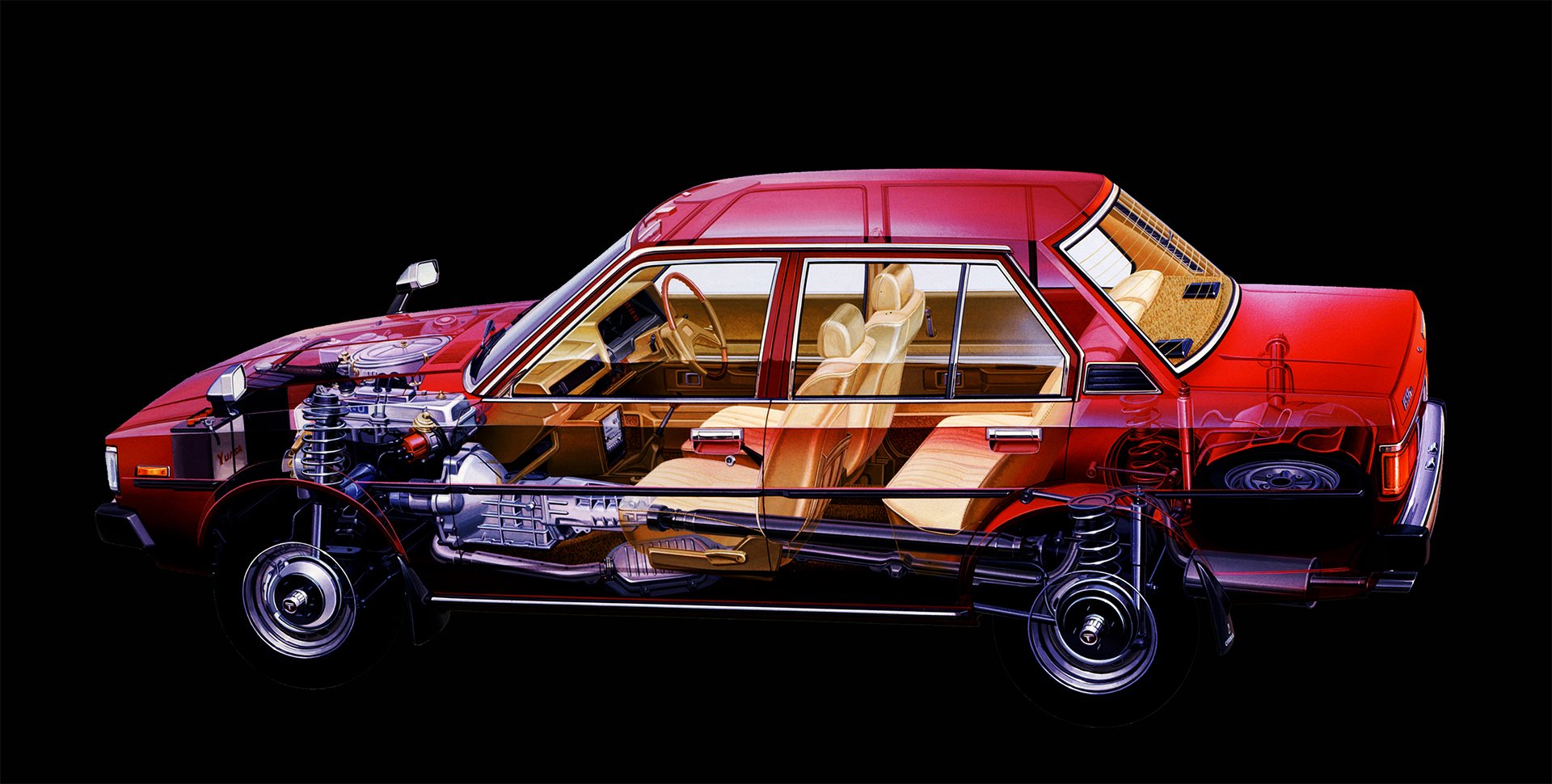

The orange indicators which had been introduced with the first generation were ahead of their time
A quick look at the catalogues for the first generation Corolla reveals that the indicators on the rear tail lamps were orange. “Of course they were. So what?” you may wonder, but when the first generation Corolla made its debut, orange-colored indicators were rare, as the indicators on many cars then were red (in many cases, they also served as the brake and tail lights). It was not until around the mid-1970s that orange indicators became commonly used in the majority of Japanese domestic vehicles. Red indicators were also used in the United States (and this still remains dominant even today), but European vehicles were already moving toward orange indicators, and so the first generation Corolla had boldly led the way with the incorporation of detailed trends such as this.

The third generation took pedestrians fully into consideration as well
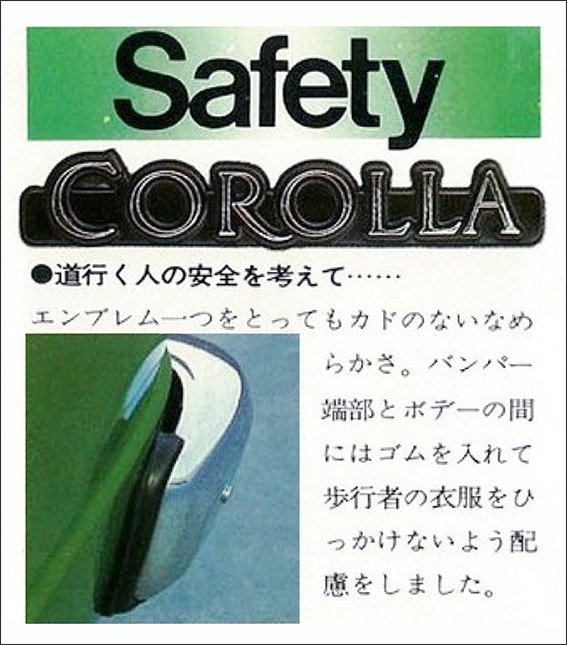
The rubber that was attached to the tops of the third generation’s bumpers had inadvertently generated attention. Contrary to popular belief, the rubber was not designed to prevent the steel bumpers from scratching the bodywork if they were bent out of shape from striking a pole, etc. Rather, the rubber was added to prevent pedestrians’ clothes from being caught in the gap between the bumper and the car body. Additionally, corner-less emblems were introduced in the interest of safeguarding pedestrians. Nowadays measures to protect pedestrians are implemented as an integral part of the vehicle, but at that time, even as Toyota was being compelled to deal with strict emission regulations as Japan’s pollution problem grew even more serious, the company was also paying careful consideration to the safety of pedestrians, as part of the “mission” of best-selling cars.

The real reason why the fourth generation’s more affordable models had no doors on their glove boxes
Among the fourth generation Corolla sedans, the glove boxes in the 1300 Standard, 1300 Custom DX and 1300 DX had no doors. These “stationary-type” glove boxes were just large open holes (glove boxes with doors are referred to as movable). However, it would be hasty to conclude that because this configuration was only used on the more affordable models, it was part of the cost adjustments. In fact, many companies wanted the more affordable models for use as sales vehicles among other purposes. When companies use cars for such purposes, their glove boxes are used to carry various documents and the other work-related materials needed in the varying lines of businesses. Since those items are being put in and taken out frequently, companies pointed out that glove box doors were in fact a hindrance. As a result, the more affordable models had employed “stationary-type” door-less glove boxes.
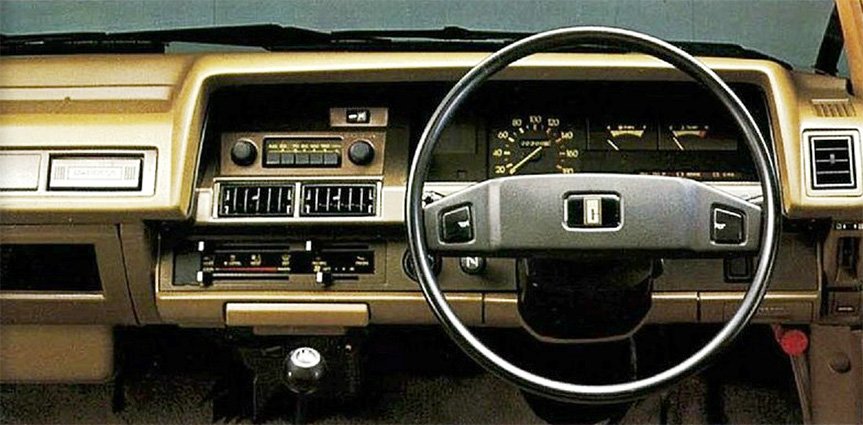
The fourth generation’s “Giugiaro design” story!
The story that Giorgetto Giugiaro - a renowned Italian designer who was also involved in designing a large number of automobiles - undertook the design of the fourth generation Corolla, in other words, the last Corolla to feature an FR (front-engine, rear-wheel drive) layout as a sedan, continues to be passed on like an urban legend even until today. The fourth generation was an orthodox three-box style, but the exterior design featured a smooth construction that had a long-lasting appeal and the GL and lower grades’ fender mirrors were a unique, stylish design, rather than the Talbot-type or flat-type designs that were mainstream at the time. Additionally, the interior layout featured door handles set under the armrests in the lining of the doors, with the regulator handles for opening and closing the windows positioned quite high up where they stood out. Furthermore, unlike the SE and GT grades, which had tachometers, the instrument panel in the GL and lower grades employed a unique and original layout that made do without a tachometer. Because there were so many features such as this that did not resemble the typical Toyota design, discussions that Giugiaro might have designed the fourth-generation Corolla flourished. Despite this story, the fourth generation was indeed designed by Toyota’s designers and not by Giugiaro.
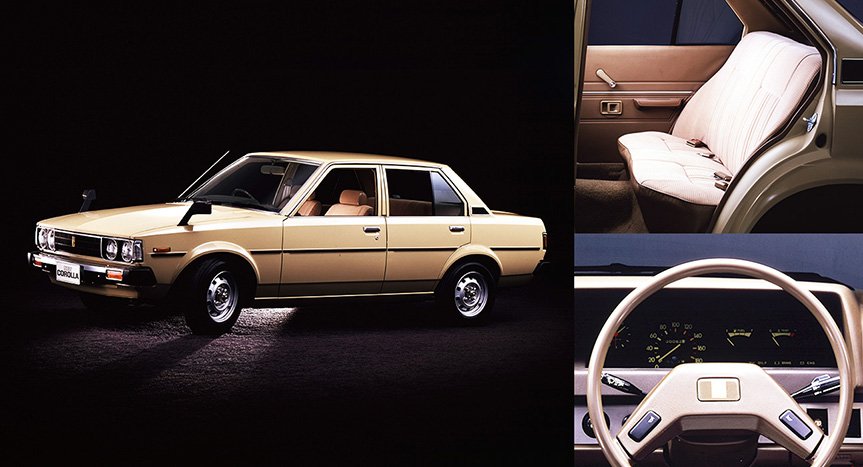
The “OK monitor” that had occupied a false space was an exclusive option only available on the GT
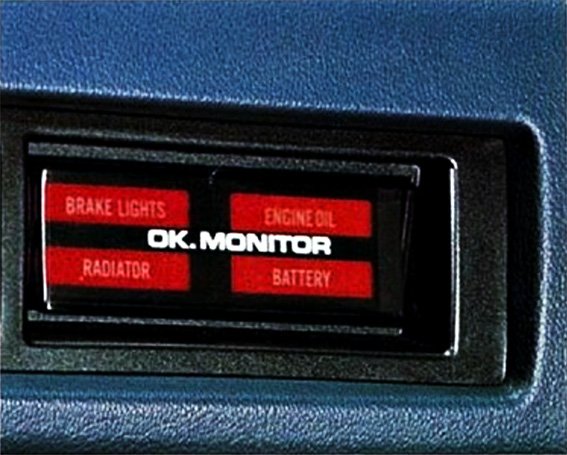
The fourth generation’s instrument panel had a false cover bearing a COROLLA logo on the side of the radio and air outlet. A so-called “OK monitor” was installed in this space as an option, but it was only available as an option on the GT. The “OK monitor” was a device that checked for burned out brake lamp bulbs, monitored the battery fluid level, the engine oil as well as the radiator coolant, among others, and a warning light would come on if a bulb had burned out or if the fluid level of the different elements was low, etc. Given that this feature was created for a limited grade, and furthermore, as it was optional, many fourth generation owners were apparently left wondering: “What goes in here?”

Folding rear seats were evidence of high-grade models!? (Fifth Generation)

The fifth generation was the first in the series to adopt an FF (front engine, front wheel drive) design, and when it made its debut, the SE Saloon, SE, and SR models were equipped with a “three-way trunk” as a standard feature. This was also called the “folding rear seat,” “trunk through seat” among the various terms, and it generally involved the back of the rear seat being divided to the left and the right so the seat at the back could fold forward to connect the trunk and the interior, which could, for example allow for long luggages to be loaded. After the fifth generation, the three-way trunk became a standard feature on the sixth and seventh generations’ GT models only, on the eighth generation’s S Cruise (early period models), as well as on the ninth, tenth and eleventh generations’ Luxel (the eleventh generation’s Luxel was discontinued early on). In other words, in the Corolla, the folding rear seat was a feature that was only available on high-grade models, and hence, the folding rear seats were not widely known to have existed.

GT model was added to the fifth generation mid-way
In October 1984, the GT sedan was added to the fifth generation Corolla lineup. It was equipped with a transverse-mounted 4A-GEU engine, which had been installed on the 86 series that employed a FR drivetrain. At this time, the hatchback-type FX was simultaneously released as the “two-box senior” within the Corolla series. The FX employed a FF drivetrain and the GT grade was fitted with a transverse-mounted 4A-GEU engine, so this was added to the sedan lineup as well. From the very time it was launched, the fifth generation featured a lineup and character styling that was conscious of the younger generation, but minor changes implemented in 1985 returned the generation to the luxurious track as seen in previous series. Nevertheless, the GT grade continued to be released, continuing all the way to the sixth, seventh and eighth generations (revived in the generation’s later models).
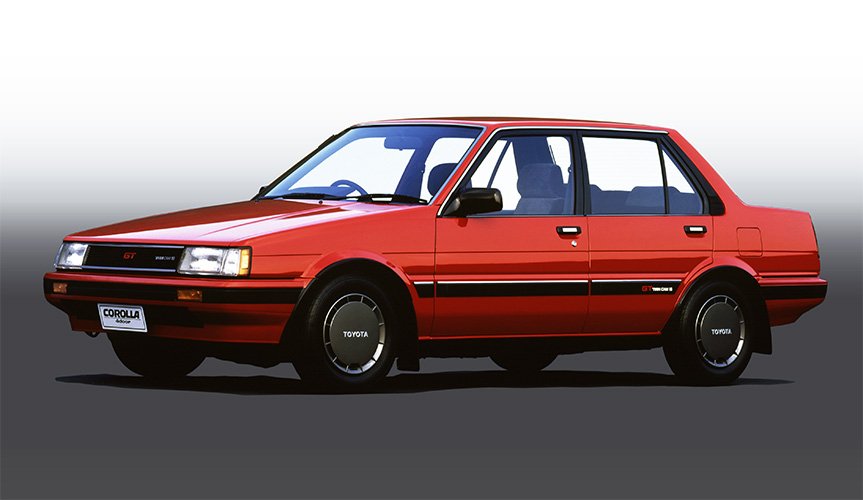
A 1.3-liter engine was actually recommended for the sixth generation
The sixth generation Corolla caused a as the vehicles were fitted with the new “High-mecha twin cam” engine (1.5 liter and 1.6 liter). However, for the gasoline engines, only the 1.3 liter model was equipped with an SOHC engine (an engine that uses one camshaft for both the intake and exhaust movements rather than the conventional two camshafts). The 1.5 liter and 1.6 liter were both Type A engines, but the 1.3 liter was a Type E engine, which at that time was being installed in the Tercel, Corsa, and Corolla II lines. While it was no match for the 1.5 liter in terms of absolute power, it was viewed as high-revving and sporty, and so it also had a slightly different feel to the High-mecha twin cam. Given this, some sales reps would also recommend customers who could not quite afford the 1.5 liter, or who were put off by the 1.5 liter from the outset because they viewed it as a “large displacement” engine, by informing them that the 1.3 liter was a comparable option as well.
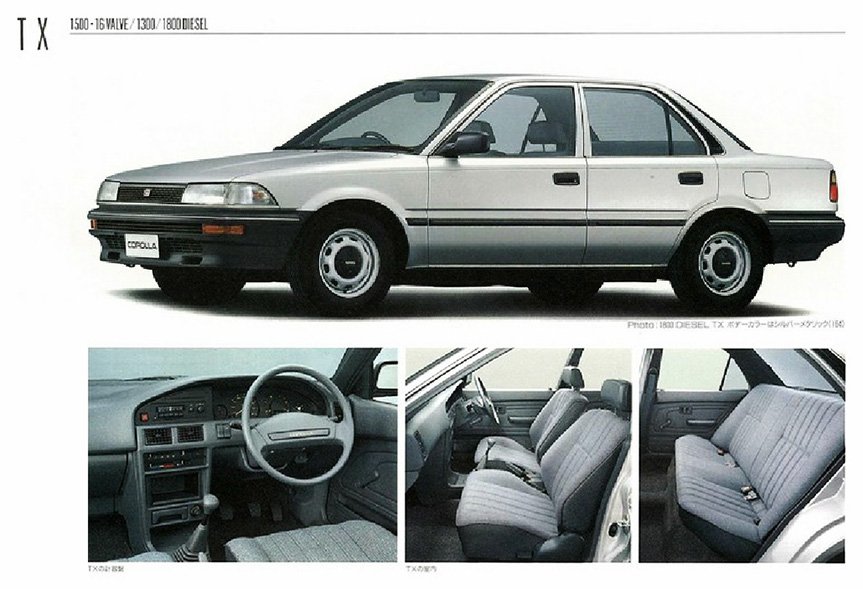
Rear spoilers were fitted to the tenth generation Luxel as a standard feature
The tenth generation sedan acquired the sub-name Axio (Japanese domestic model), but essentially carried on the styling of the ninth generation. The Luxel featured a fuller lineup of equipment that exceeded its class, such as the Smart Key System and the Intelligent Parking Assist, but a hidden point was that the rear spoiler came as a standard feature. The spoiler was on the smaller side and was rather inconspicuous, but given that the Luxel’s character had made frequent use of woodgrain styling and woodgrain panels, it was also somewhat of a “flamboyant” feature. At that time, the changing age demographic of Corolla users was emerging as a challenge, and the spoiler was a feature that was also designed to appeal to younger customers.

Eleventh generation’s brown interior a sign of a fastidious driver
The Eleventh generation that is sold exclusively in Japan represents a “return to the origins,” and it was developed with an emphasis on enhanced usefulness. It also comes with stylish options such as being able to choose the color of the interior. Normally, when there are several interior colors, each comes matched with a respective body color, but in the case of the eleventh generation Axio, it is possible to choose black or flaxen (a brown color resembling tan leather) for the seat material, with all the exterior color options on the Hybrid G and 1.5 G models. However, unless a particular preference is stated when ordering, the standard seat color is black, so if you spot a Corolla with flaxen-colored seats around town, it could probably mean that the owner relatively more fastidious.
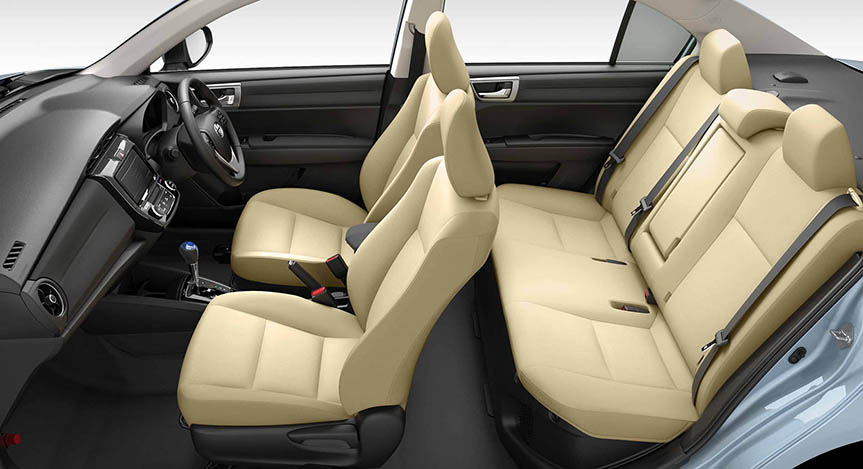



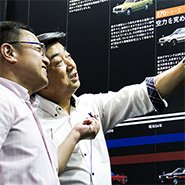
![Corolla geek meets the Corolla master [column]](/pages/corolla50th/feature/corolla_enthusiast02/images/feature_corolla_enthusiast02_w185.jpg)
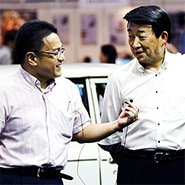
![[Movie] Keiichi Tsuchiya's driving impression of the AE86 Corolla Levin](/pages/corolla50th/feature/ae86/images/feature_ae86_w185.jpg)



